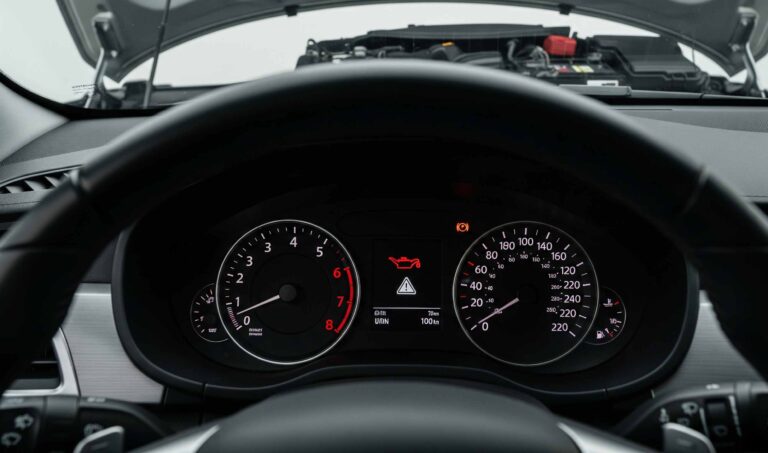Are O2 sensor spacers illegal?
Yes, installing O2 sensor spacers is generally considered illegal in many regions because they modify emission control devices, which can lead to non-compliance with environmental laws. However, legality varies depending on local regulations.
If you’re considering using O2 sensor spacers, understanding both their purpose and legal implications is crucial. In this article, I’ll walk you through the facts, potential consequences, and tips to stay compliant with laws while optimizing your vehicle’s performance.
What Are O2 Sensor Spacers?
Oxygen (O2) sensor spacers are small components placed between the O2 sensors and the exhaust system. They create a gap, often to improve sensor readings, alter fuel mixture, or disable certain emissions features. Many car enthusiasts use them as a quick fix to eliminate CEL (Check Engine Light) or tweak vehicle performance.
Why Do People Use O2 Sensor Spacers?
- To disable or weaken emission controls: Sometimes used to bypass catalytic converter tests.
- To improve sensor responsiveness: Some believe spacers help sensors read exhaust gases more accurately.
- To fix false trouble codes: If a defective sensor is causing errors, spacers might be seen as a temporary fix.
Are O2 Sensor Spacers Illegal?
Short Answer: Yes.
Most regions, including the U.S., Canada, and the European Union, regulate emissions devices strictly. Using O2 sensor spacers generally violates these regulations because they interfere with the vehicle’s emissions system, leading to illegal modifications.
Legal implications include:
- Fines and penalties for violating emissions laws.
- Vehicle failing emissions tests.
- Potential voiding of manufacturer or warranty coverage.
Why Is This Important?
Modifying emission control devices with spacers can cause your vehicle to emit pollutants beyond legal limits. It also affects your vehicle’s compliance with environmental laws, which can lead to hefty fines and legal trouble.
Understanding the fine line between performance tuning and illegal modifications is essential for responsible vehicle ownership.
Deep Dive: The Legal Landscape of O2 Sensor Spacers
| Region | Legality Status | Key Regulations | Potential Penalties |
|---|---|---|---|
| United States | Generally Illegal under EPA and state laws | Clean Air Act & State-specific emission laws | Fines, vehicle rejection from inspection, loosing registration |
| European Union | Illegal under EU emission standards | EURO standards compliance | Fines, vehicle confiscation, insurance issues |
| Canada | Illegal under federal and provincial laws | Canadian Environmental Protection Act | Penalties similar to the U.S. |
Note: Some performance shops may argue spacers are “for off-road use only,” but legality depends on where you drive and local enforcement.
How Do O2 Sensor Spacers Work?
Definition List:
- O2 Sensor: A device that measures oxygen levels in exhaust gases to help the engine control unit (ECU) optimize fuel mixture.
- Spacer: An adapter or a small block that alters the sensor’s position.
Mechanism:
- Spacers raise the sensor from the exhaust stream, changing the readings.
- This can cause the ECU to interpret the data differently, sometimes reducing emissions or turning off warning lights.
Step-by-Step: Installing O2 Sensor Spacers (if legal in your region)
- Ensure Compatibility: Confirm your vehicle’s sensor type and spacer size.
- Prepare Tools: Usually, you need a wrench, gloves, and possibly thread sealant.
- Remove Sensors: Carefully disconnect the existing O2 sensors.
- Install Spacers: Thread the spacer onto the sensor or exhaust pipe.
- Reconnect Sensors: Attach the sensors to the spacers, ensuring tightness.
- Test Drive: Confirm the sensors are functioning correctly and check for warning lights.
Note: Always check local regulations before starting this process.
Tips for Success
- Research local laws: The legality of using spacers varies widely; always verify before installing.
- Use high-quality spacers: Cheap components often cause more issues, including sensor malfunctions.
- Monitor your vehicle: Keep an eye on warning lights and emissions readiness after installation.
- Consult professionals: When in doubt, get advice from licensed mechanics familiar with emissions laws.
Common Mistakes and How to Avoid Them
| Mistake | Consequence | How to Avoid |
|---|---|---|
| Ignoring legal regulations | Fines, vehicle fails inspection | Always check local laws beforehand |
| Using low-quality spacers | Sensor errors, damage | Invest in reputable brands |
| Not recalibrating ECU | Poor performance, warning lights | Consider professional tuning or ECU reset |
| Installing without professional advice | Voiding warranty, legal issues | Consult experienced mechanics |
Variations of O2 Sensor Modifications
Instead of spacers, enthusiasts may try:
- Sensor delete kits: Removing sensors entirely (usually illegal).
- Sensor simulator devices: Fake signals to fool ECU (often illegal).
- Custom tuning: Adjusting ECU mappings legally via software.
Each variation has its own legal and performance implications, which require careful consideration.
Why Modifying Emission Devices Matters
The core reason this info matters is that vehicle emissions directly impact air quality and environmental health. While tuning can boost performance, it must be balanced with legal compliance. Ignoring laws can lead not only to fines but also to increased pollution and health risks.
Being informed helps you enjoy your vehicle responsibly and avoid legal trouble.
Final Thoughts
In summary, O2 sensor spacers are generally considered illegal because they interfere with a vehicle’s emission control systems, which are tightly regulated by law. If you’re contemplating using these spacers, always check your local regulations first. Opt for legal tuning methods to maximize your vehicle’s performance without risking penalties.
Remember, responsible modification benefits both your wallet and the environment. Stay compliant, stay safe, and enjoy your ride!
If you need further advice on vehicle modifications or emissions compliance, be sure to consult a professional or your local DMV/regulatory agency.


